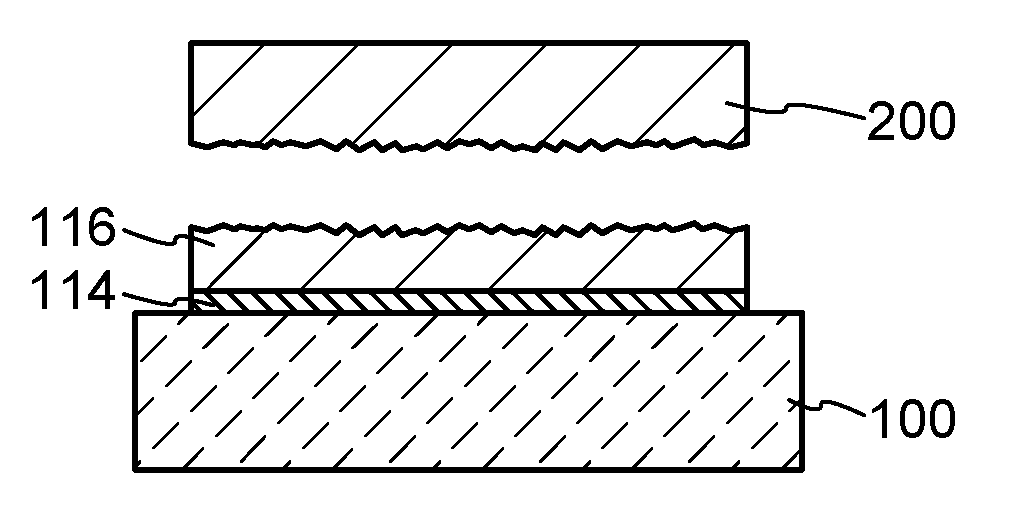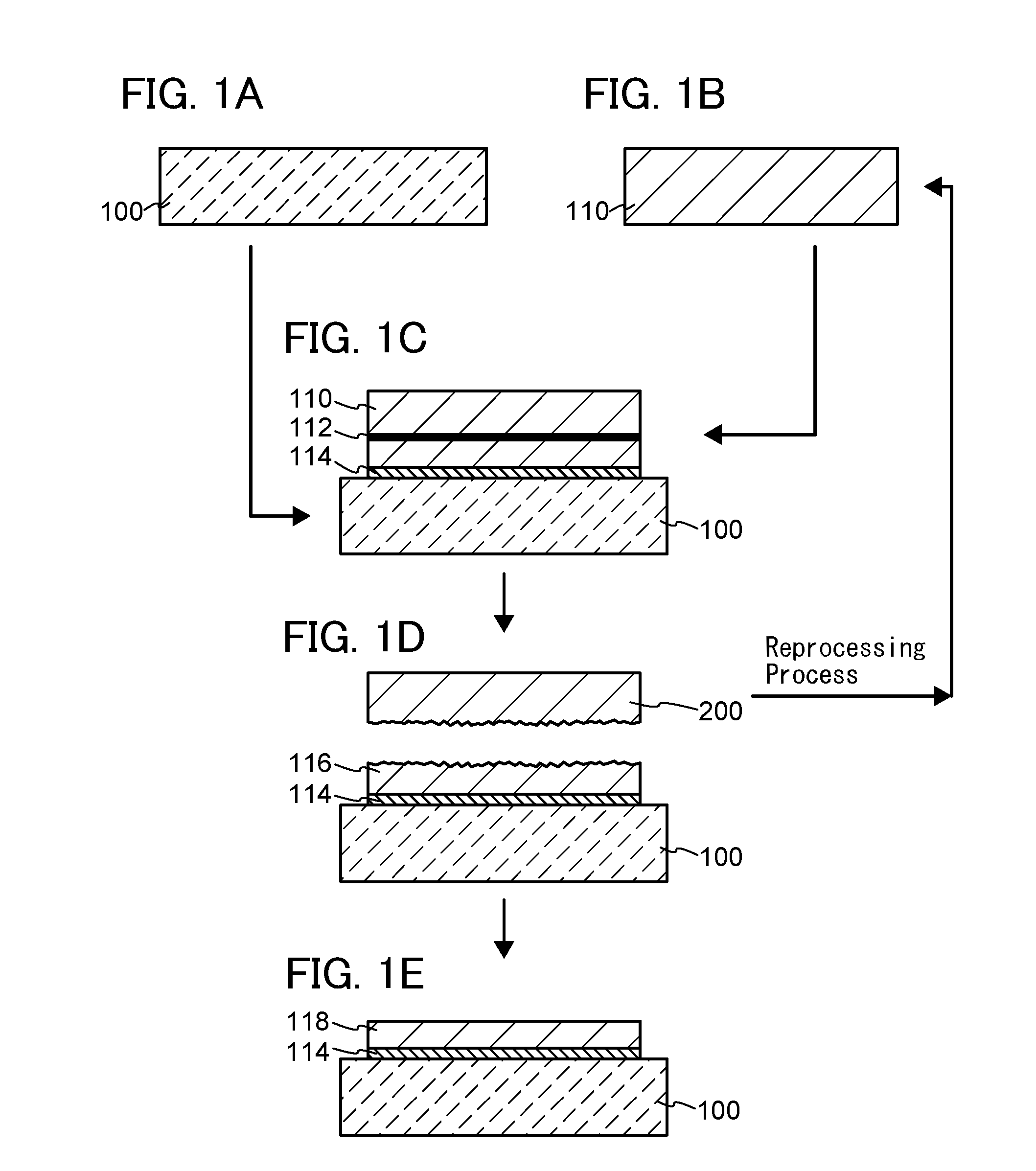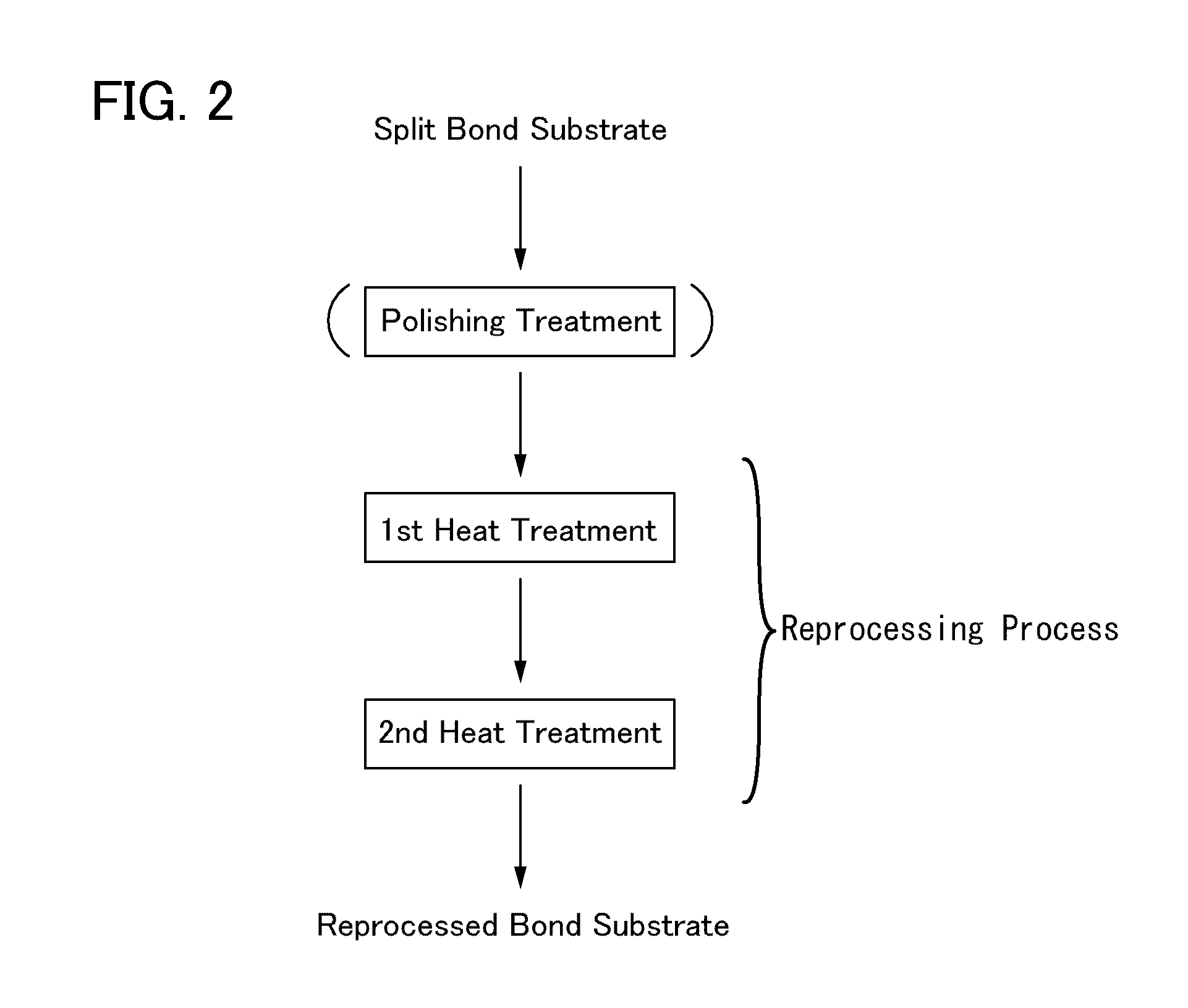Method of manufacturing soi substrate
a technology of soi substrate and manufacturing method, which is applied in the direction of semiconductor/solid-state device manufacturing, basic electric elements, electric apparatus, etc., can solve the problems of adversely affecting the semiconductor properties, increase in oxygen defects, and significant deterioration of semiconductor properties, so as to reduce improve the properties of soi substrate and reduce the effect of oxygen defects or impurities
- Summary
- Abstract
- Description
- Claims
- Application Information
AI Technical Summary
Benefits of technology
Problems solved by technology
Method used
Image
Examples
embodiment 1
[0027]In this embodiment, an example of a method of manufacturing an SOI substrate is described with reference to drawings. Specifically, a process of manufacturing an SOI substrate is described using FIGS. 1A to 1E, and Process of Forming Reprocessed Bond Substrate is described using FIG. 2 and FIGS. 3A to 3E.
[0028]First, a base substrate 100 and a bond substrate 110 are prepared (see FIGS. 1A and 1B).
[0029]As the base substrate 100, a substrate formed of an insulator can be used. Specific examples thereof include a variety of glass substrates used in the electronics industry, such as substrates of aluminosilicate glass, aluminoborosilicate glass, and barium borosilicate glass, a quartz substrate, a ceramic substrate, and a sapphire substrate. Note that by containing a larger amount of barium oxide (BaO) than the amount of boric acid, a glass substrate as mentioned above has heat resistance such that it is more practicable. Thus, a glass substrate containing a larger amount of BaO ...
embodiment 2
[0064]In this embodiment, another example of the method of manufacturing an SOI substrates is described.
[0065]Although the process of reprocessing the split bond substrate is detailed in the above embodiment, an unused bond substrate may be subjected to this reprocessing process. In this case, removal of contaminants in the bond substrate and a reduction in defects are possible, contributing to a further improvement of the properties of a manufactured SOI substrate. Further, since the oxygen in the bond substrate is reduced and the DZ layer can be formed even to a certain depth of the bond substrate, growth of an OSF can be inhibited, and the number of times of repeated use of the bond substrate can be increased compared with a bond substrate that is not subjected to the process. Note that this process does not relate to the reprocess of the bond substrate and therefore can be simply called “heat treatment” or the like instead of “reprocessing process”.
[0066]Since the details of the...
embodiment 3
Process of Manufacturing SOI Substrate
[0071]In Embodiment 3, examples of the method of manufacturing an SOI substrate are described with reference to drawings. Note that parts that are different from those of the above Embodiments 1 and 2 are detailed while the descriptions of the same parts as those of Embodiment 1 and 2 are omitted.
[0072]To begin with, a manufacturing method according to First Mode is described with reference to FIGS. 4A to 4E.
[0073]First, the base substrate 100 is prepared (see FIG. 4A). As the base substrate 100, a light-transmitting glass substrate used for a liquid crystal display device or the like is available. As the glass substrate, a substrate having a strain point of 580° C. or more (preferably, 600° C. or more) may preferably be used. Further, the glass substrate is preferably a non-alkali glass substrate. The non-alkali glass substrate is formed using a glass material such as aluminosilicate glass, aluminoborosilicate glass, or barium borosilicate glas...
PUM
 Login to View More
Login to View More Abstract
Description
Claims
Application Information
 Login to View More
Login to View More - R&D
- Intellectual Property
- Life Sciences
- Materials
- Tech Scout
- Unparalleled Data Quality
- Higher Quality Content
- 60% Fewer Hallucinations
Browse by: Latest US Patents, China's latest patents, Technical Efficacy Thesaurus, Application Domain, Technology Topic, Popular Technical Reports.
© 2025 PatSnap. All rights reserved.Legal|Privacy policy|Modern Slavery Act Transparency Statement|Sitemap|About US| Contact US: help@patsnap.com



